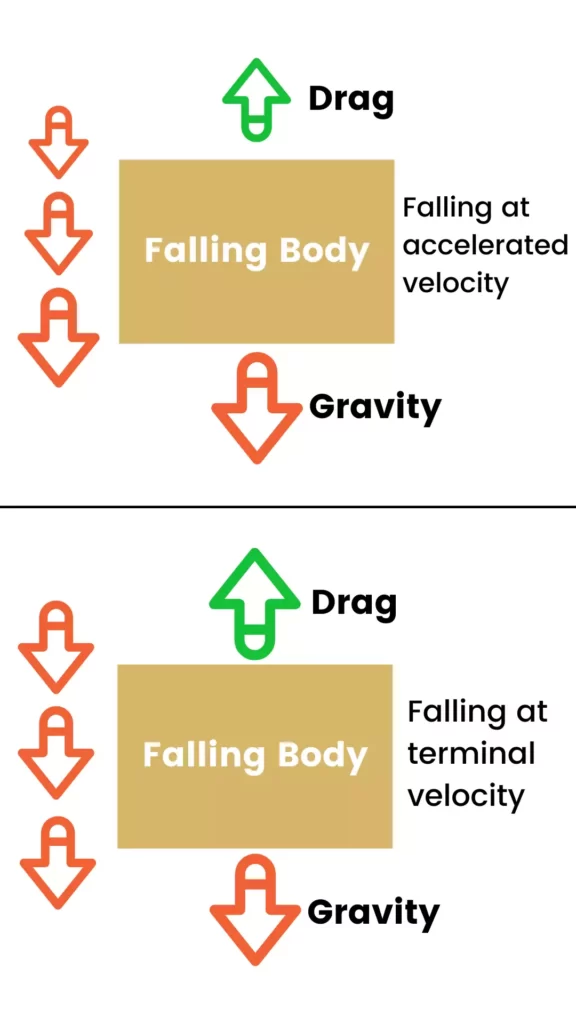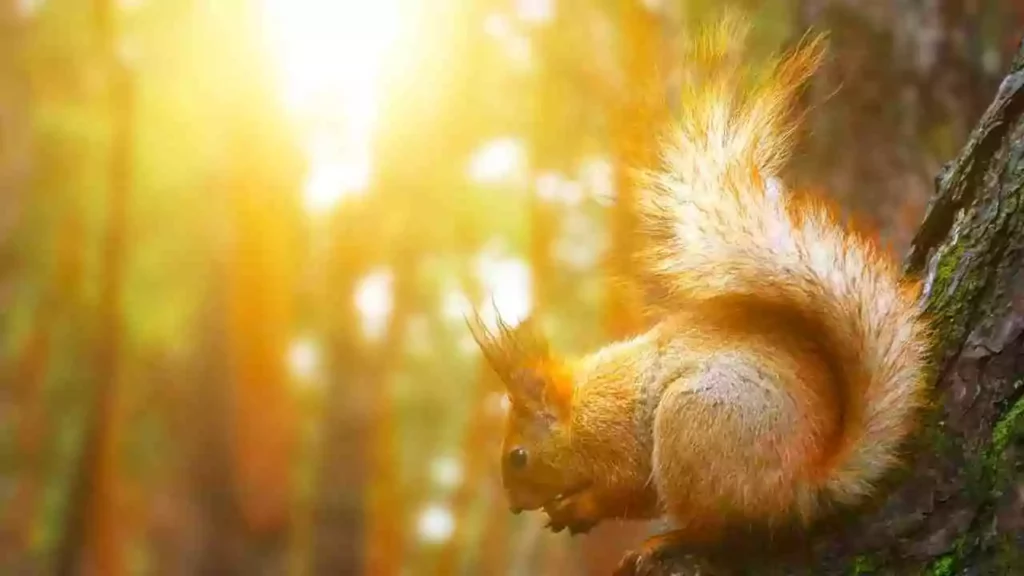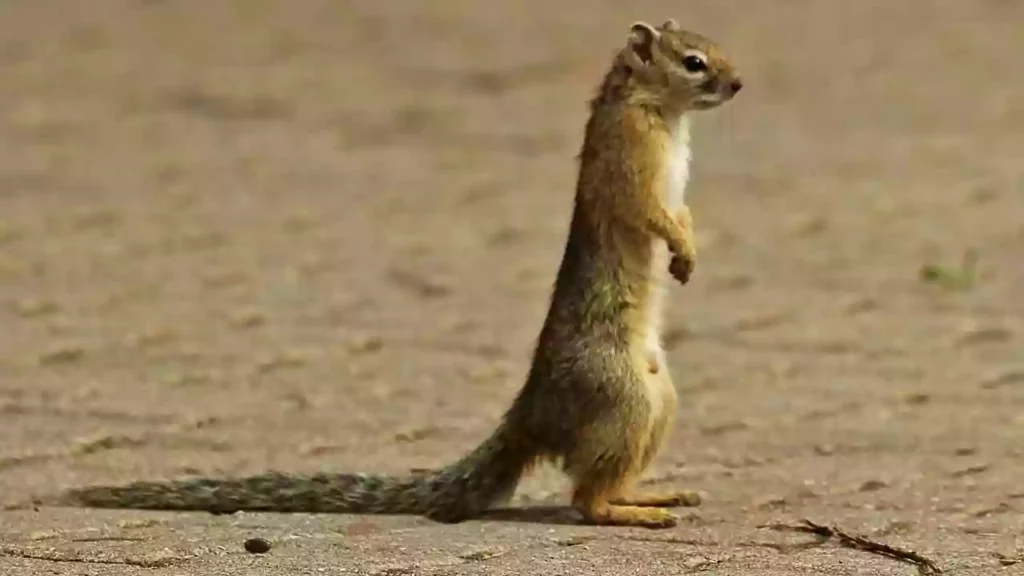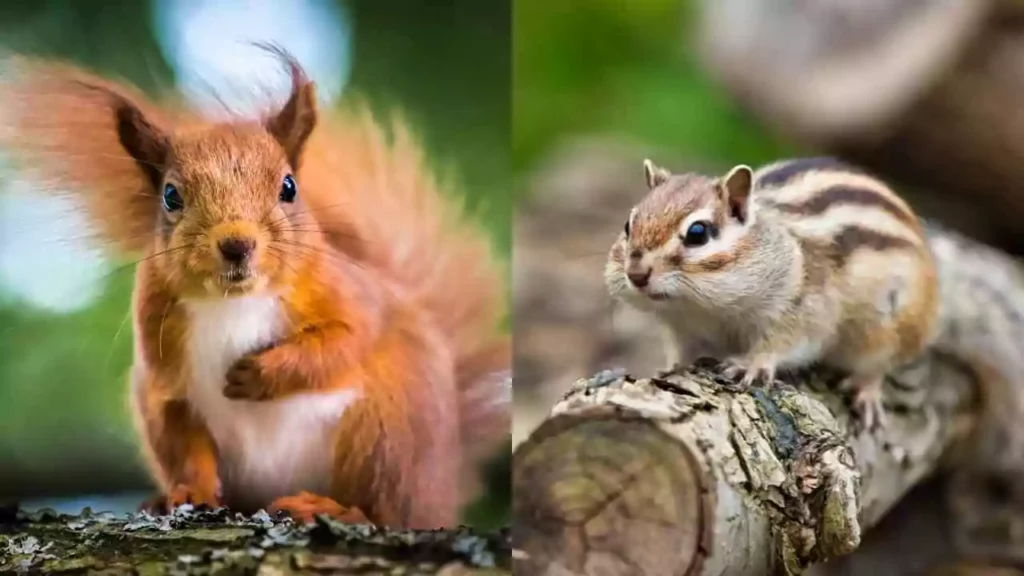An object falls under the action of two forces acting in opposite directions. The gravitational force pulls the object downward while the air resistance puts an upward force.
Under the effect of these two forces, an object falls with a constant velocity called terminal velocity.
The higher the terminal velocity of an object, the greater the impact it will face on touching the ground. So, if a horse, cow, and squirrel will jump from a certain height, the cow will smash down, the horse will shatter, but the squirrel will not be harmed by falling. Yes, terminal velocity plays its part here. Squirrels face little impact by falling on the ground and survive terminal velocity.
Can Squirrels Survive Terminal Velocity?

Yes, squirrels can survive terminal velocity. The terminal velocity of an object depends on the area to mass ratio of an object. Let’s take a hammer and a feather as examples to elaborate on it further.

Suppose you drop a feather and a hammer from a certain height; which object will touch the ground first? It’s a hammer. And what about the intensity of their falling? Hammer will smack on the ground in no time while the feather will land gradually, making little impact on the ground.
Feather has a high surface area compared to its mass so that it will face large aerodynamic resistance. In contrast, the hammer has a lower area to mass ratio and falls on the ground instantly.
According to data , a squirrel can fall with speed of 23mph. Squirrels’ terminal velocity is low due to their light (350 grams) and outspread bodies. When they fall from high trees, they face large aerodynamics resistance and experience little impact from the ground. So, they don’t fall dead from heights in contrast to most other mammals.
How Long Does It Take For A Squirrel To Reach Terminal Velocity?
When a squirrel jump from a height in the first few seconds, a balance is created between the force of gravity and air resistance. After 3 to 4 seconds of falling, the squirrel accelerates downward with a constant terminal velocity. So, a squirrel takes a very short time to reach its terminal velocity.
How Far Can A Squirrel Fall And Survive?
There is a height limit for human beings to jump from without experiencing physical damage. However, it is not the case for squirrels. Whether a squirrel falls from a 200ft high pine tree or a 2000ft high rock face, it’s similar for the squirrel.
After the first 3 seconds of fall, squirrels get their terminal velocity regardless of the height and bear the same impact on touching the ground. So, squirrels will survive due to their low terminal velocity irrespective of the height they are falling.
Can Squirrels Jump Off A Building?
Yes, squirrels can jump off high buildings without physical damage to their body. Their light body and parachute-like tail increase their surface area, which helps them to have low terminal velocity. So a squirrel can jump off a building without any serious injury.
Dropping A Squirrel From A Plane!
Surely, it’s a crazy idea to drop a squirrel from a plane. And it is unethical to do this just for personal pleasure. However, squirrels can survive that fall too. Low squirrel terminal velocity prevents it from the severe impact of touching the ground.
Why Do Squirrels Fall Out Of Trees?
You may find a squirrel falling from a tree and then running away abruptly. When chased by a predator, squirrels usually fall out of trees or jump intentionally, But falling from a tree does not damage a squirrel, and they ran away just after gathering their courage.
How High Can A Squirrel Jump?
A squirrel can jump 4 to 5 feet up on the ground. They can jump from one object to the other 7 feet apart and up to 10 feet down from a tree or a building.
How Do Most Squirrels Die?
Here are some most prevalent causes of squirrel’s death.
- Some baby squirrels fall from their nest and die due to starvation.
- Squirrels fall prey to predators like hawks, eagles, red foxes, and wild cats.
- Electric shocks, road accidents, and poisoning are leading causes in urban areas.
- Some species like red squirrels are more prone to fatal diseases like the squirrel pox virus.
- Leptospirosis, Lyme’s disease, Salmonellosis, and Tularemia also cause moralities in squirrels.
What Other Animals Survive Terminal Velocity?
Other than squirrels, all types of insects, spiders, and cats can survive terminal velocity. Cats have been found falling from 80 feet on solid ground and walking away. Any other rodent smaller than the size of a squirrel can survive terminal velocity.
Final Words
Terminal velocity is the maximum speed with which an object falls from an arbitrary height. It depends on the area-to-mass ratio of an object.
Due to the high area to mass ratio, squirrels survive terminal velocity and don’t experience injuries and physical damage. So, falling from heights and walking away is not dangerous in the squirrel world.
SmallPetsX.Com does not provide veterinary advice. Our aim to help small pet owners understand their pets a little better so that they can provide their pets with the life they deserve. All content is therefore for informational purposes only. If you're concerned about the health of your pet you should seek medical advice from a vet.




